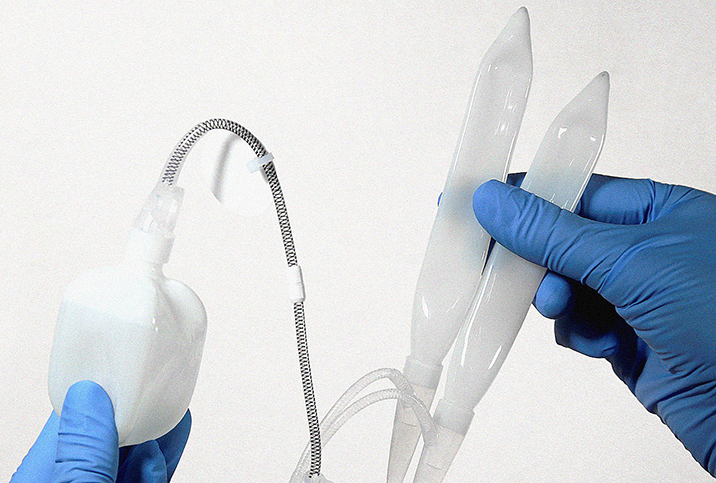Are Penile Implants a Long-Term ED Solution?

In the early 1970s, doctors introduced a three-piece device called an inflatable penile prosthesis—and men rejoiced. Now commonly referred to as penile implants, these medical devices are used to treat erectile dysfunction by mimicking the process of achieving a natural erection.
Through additional research and development, penile implants have come a long way in the past five decades. They are now safer, more durable and much more popular with doctors and patients alike.
Along with the benefits, however, come a host of risks that men should consider before choosing a penile implant as a treatment for ED.
Giddy Urologist Dr. Edwin Morales explains the different kinds of ED treatments in the ED Guide video series. Click here to watch the video.
A more permanent solution
While prescription drugs such as sildenafil, tadalafil and vardenafil are often the first choices for treating ED, they are effective in only 70 percent of men, and some men may not want to take a pill an hour before every sexual encounter.
Another type of ED treatment that is less invasive than an implant, and without the side effects of ED pills, is a wearable device like Eddie by Giddy®. This device is placed around the base of the penis and helps maintain an erection by restricting blood outflow without restricting blood inflow.
Men looking for a more permanent solution to ED may consider a penile implant, which can generate a sustained erection in less than 15 seconds.
Inflatable implants are the most common type and generally contain three main components:
- A fluid-filled reservoir that is surgically placed under the abdominal wall
- A pump connected to a release valve that is placed inside the scrotum
- Two inflatable cylinders that are surgically inserted into the shaft of the penis
The inflatable implant works by manually pressing on the scrotum to drive the fluid from the reservoir into the cylinders. As the cylinders “balloon up” with fluid, their inflation supports the perpendicular movement of the penis, in a similar fashion to a natural erection. After intercourse, pressing the deflation valve allows the fluid to return to the reservoir, to mimic the normal flaccid state of a penis.
Semi-rigid implants, the other category of devices, are designed to remain firm permanently. The penis is bent toward the body for concealment and can be pointed away from the body perpendicularly for sex.
In contrast to inflatable devices, the chances of malfunction are lower with the semi-rigid implants, because there are fewer parts in the assembly. However, they tend to put constant pressure inside the penis, which can, in some cases, result in long-term injury.
Possible disadvantages
Penile implant surgery and the devices themselves pose some risks and complications, including:
- Infections. As with any surgery, penile implants carry the risk of infection. Though the typical rate of infection is low at 1 to 3 percent, rates as high as 8.8 percent have been reported in selected studies. The risk is significantly higher in patients suffering from diabetes or spinal cord injury. In cases where penile reconstruction is involved, the risk for infection can reach as high as 21.7 percent.
- Malfunction. In rare cases, a malfunction in any component of an inflatable device can derail the experience for couples that rely on such devices.
- Erosion. In certain instances, the implant can stick to the skin inside the penis. Though rare, implants can break through the skin, causing irreversible damage or pain in the penis.
- Removal. Surgery to remove implants can be extremely complicated and result in scar tissue and a decrease in penis length.
Is an implant right for you?
Men should weigh several factors before deciding to get a penile implant. Speak with your doctor about how the penis will look after surgery, as well as the “feel” of the device.
The good news is that penile implants have patient approval rates as high as 80 to 90 percent. Also, in terms of sexual pleasure, a penile implant does not alter the degree of sensation or interfere with a man’s ability to ejaculate and achieve orgasm.
Ask your urologist about the surgical procedure and factors such as risk of infection, length of stay in the hospital and recovery time. Most medical insurance, including Medicare, should cover the costs of penile implants. Also ask about the costs required for emergency surgery to remove an implant if there is a complication in the future.
Most penile implants are effective for 10 to 15 years, and that means this is a major long-term decision to make. Talk to a doctor about the tradeoffs of getting a penile implant: There is freedom from prescription drugs, but penile implants may pose risks that you’re unwilling to take.

















